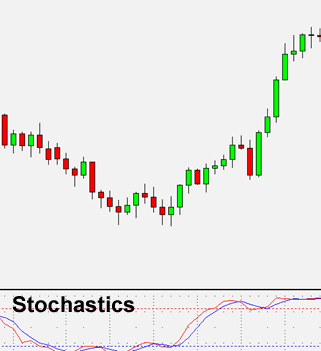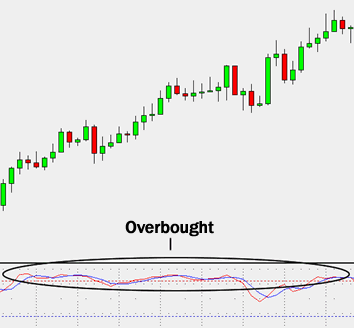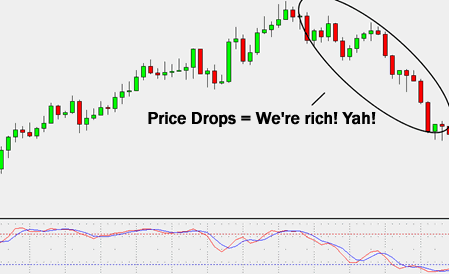Stochastics
Stochastics are
another indicator that helps us determine where a trend might
be ending. By definition, a stochastic is an oscillators that
measures overbought and oversold conditions in the market. The 2 lines
are similar to the MACD lines in the sense that one line is
faster than the other.

How to Apply Stochastics
Like I said earlier, stochastics tells us when the market
is overbought or oversold. Stochastics are scaled from 0
to 100. When the stochastic lines are above 80 (the red
dotted line in the chart above), then it means the market is
overbought. When the stochastic lines are below 20 (the
blue dotted line), then it means that the market is
oversold. As a rule of thumb, we buy when the market is
oversold, and we sell when the market is overbought.

Looking at the chart above, you can see that the stochastics
has been showing overbought conditions for quite some time. Based
upon this information, can you guess where the price might go?

If you said the price would drop, then you are absolutely
correct! Because the market was overbought for such a
long period of time, a reversal was bound to happen.
That is the basics of stochastics. Many traders use
stochastics in different ways, but the main purpose of the
indicator is to show us where the market is overbought and
oversold. Over time, you will learn to use stochastics
to fit your own personal trading style.
|